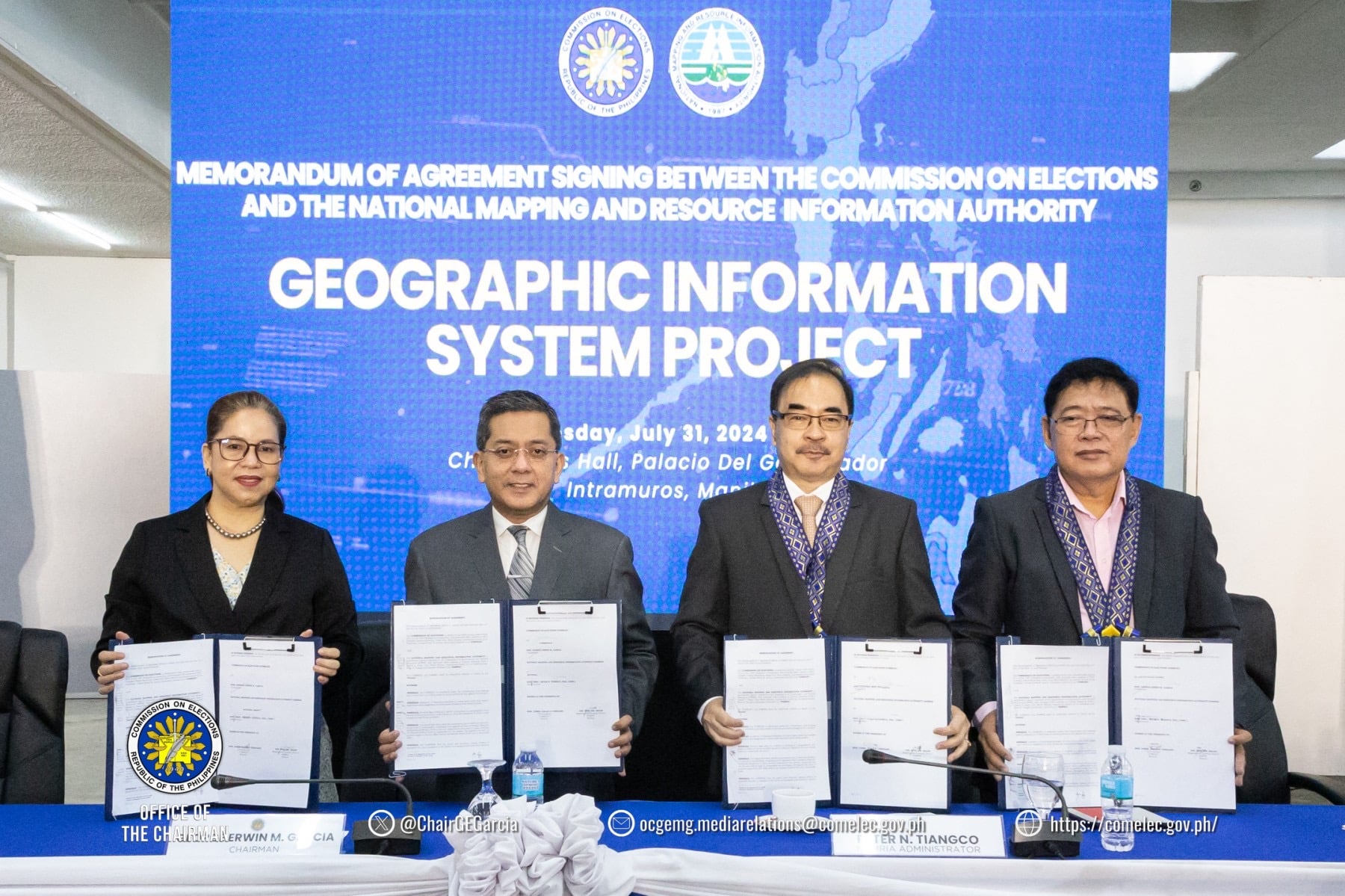
Commissioner Aimee Ferolino, Comelec Chairman George Garcia, Namria Undersecretary Peter Tiangco and Namria Mapping and Geodesy Branch Director Ruel Belen at the ceremonial signing of the memorandum of agreement for the Geographic Information Systems Project on Wednesday, July 31. (Photo from the Office of the Chairman/Comelec)
MANILA, Philippines — The Commission on Elections (Comelec) and National Mapping and Resource Information Authority (Namria) underscored the importance of using technology to ensure seamless and fair elections in a ceremonial signing of a memorandum of agreement on Wednesday.
Comelec and Namria teamed up to implement the Geographic Information System (GIS), a computer-based application that analyzes and displays map information.
“By leveraging Namria’s expertise in mapping and geospatial intelligence, we aim to support Comelec in addressing challenges to geospatial data and updating election precinct maps,” said Namria Undersecretary Peter Tiangco.
Furthermore, Namria Mapping and Geodesy Branch Director Ruel Belen mentioned that the agency would provide base maps and training for Comelec technical personnel.
“Of course, we always say that, in order to enhance democracy, we must use technology, and in order to enhance democracy and technology, we must always use the power of partnership,” Comelec Chairman George Garcia said, speaking partly in Filipino, in an ambush interview on Wednesday.
Garcia noted that Namria would be helpful during elections in tasks such as locating barangays and poll precincts.
READ: ‘Problematic’: Comelec sees 1,000 voters per precinct in 2025 elections
“We want to see the actual barangays up to the precinct [level]. What happens there? The maps from Namria will be a big help in distributing electoral materials and sending electoral board members, the military, and the PNP. It would be very useful for us to have maps from Namria,” Garcia said.
“We have what we call precinct mapping that identifies the location of a precinct. Is this particular precinct near voters? We may be putting precincts too far from voters. Namria will help ensure that we will not have disenfranchised voters just because Comelec polling precincts are too far,”
READ: Comelec expects 20,000 voting machines by August
According to Garcia, the GIS will operate as early as January when 82 repair hubs will be established in all the provinces nationwide. Repair hubs will assist in repairing broken voting machines.
Last April, Comelec reported that the initial batch of around 20,000 voting counting machines for the 2025 local and national elections were expected to arrive by August.